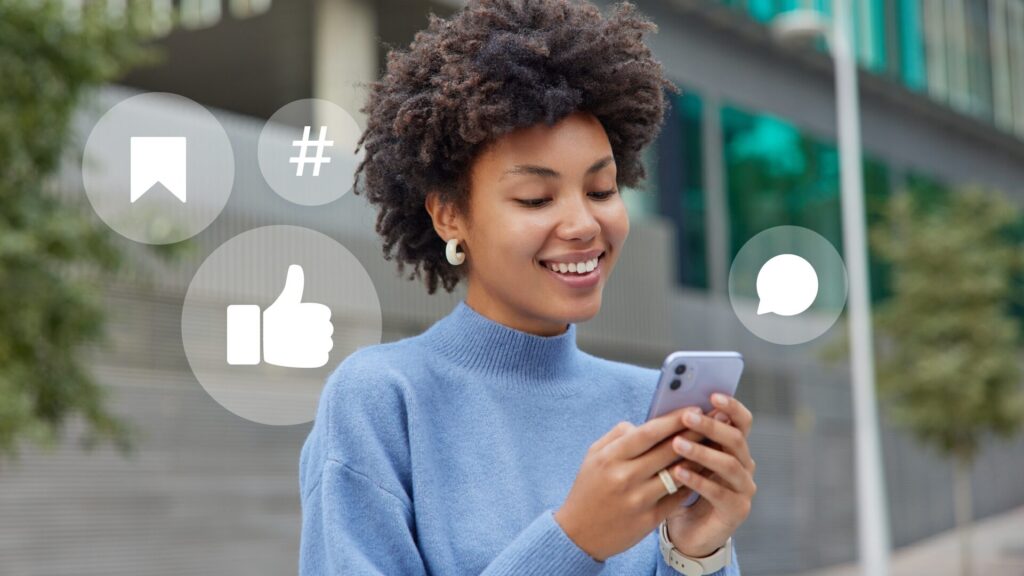How are brands using TikTok in their marketing?

Brands utilizing social media is nothing new. It’s a great way to interact with your audience and show some personality, meaning social media is a solid platform for brands to engage and sell. The key channels usually depend on your brand and your team’s capacity, but the key players have always been Facebook, Twitter, Instagram, and LinkedIn. Other social media platforms do pop-up from time to time, but it’s been a little while since we’ve seen a new one shake up the landscape as much as new kid on the block, TikTok.
TikTok usage and demographics
TikTok was the most downloaded social media app worldwide in 2021, the third consecutive year it has held this title. In 2021, TikTok saw a huge 656 million downloads, a whole 111 million more than second-place Instagram. So it’s looking like TikTok is here to stay.
It started off very much as an app for the younger generation to perform dance routines to viral sounds. With Gen Z taking to the platform, and calling anyone with a middle part or wearing skinny jeans ‘cheugy’, it’s something many of us disregarded as one for the younger generation. However as TikTok has increased in popularity, the content and communities available have diversified and it’s fast become a platform brands shouldn’t ignore.
2020 user demographic statistics saw an age split with a clear skew towards the under 25s at 69.74%. Those aged 25-34 made up 21.78% of users, and those aged between 35 and 44 made up just 6.18% of users. In 2021 however, we saw this shift to an almost equal distribution across the age groups, with older users emerging. The younger age group is still the majority, with those aged 10-19 making up a 25% share of the audience, and 20-29 year-olds close behind them at 22.4%. The shift comes clear when you look at the older demographics, 30-39 year-olds now sit at 21.7%, and those in their forties represent 20.3% of users. Perhaps most interestingly, the over fifties were now representing 11% of users – almost double the 35-44 age group one year earlier.
TikTok shopping
The audience share for those with purchasing power and disposable income has shot up. This paired with the launch of in-app shopping in 2021 after partnering with Shopify, TikTok has quickly become a lucrative platform that brands need to be utilizing to connect with potential customers. TikTok shopping allows users with a business account to host a store front within their profile, allowing users to browse and purchase items, without leaving the app.
TikTok is making real efforts to continue to grow this element of the platform, and it’s no wonder why. TikTok users spent $2.3 billion in the app in 2021, including the iOS version of its Chinese localization Douyin, which was an increase of 77% YoY from $1.3 billion in 2020. The upward trend looks here to stay. In Q1 of 2022, TikTok generated $821 million in global consumer spending across the App Store and Google Play.
TikTok found that 67% of users say TikTok inspired them to shop even when they weren’t looking to do so. A huge 73% of users said they feel a deeper connection to brands they interact with on TikTok, compared to other platforms.
TikTok describes their unique approach to shopping on the platform as an ‘infinite loop’. Their research found that users spend 14% more when TikTok is a part of the purchase journey – so it really isn’t something to sleep on.
Now, if all of that has convinced you to want a slice of the pie, read on to learn how brands are creating brand-appropriate content on the platform.
How brands are using TikTok
TikTok shopping and ads are one side of the coin, but first and foremost, TikTok is a content platform. People will only follow your brand if they like your content, so you need to build up that following and engagement with content that isn’t directly related to conversions, but instead grows your presence.
One of the first things to consider when deciding to make TikTok content, is who’s going to star in it. Some organizations will have willing staff who are a natural in front of the camera, and are happy to do it. If you do decide to use real staff in your videos, don’t just focus on one member of staff in case they leave, instead include a mixture to be the faces of your brand.
Other organizations may not have such willing team members who want to be on camera, and that’s okay. There are ways around this. European airline, RyanAir, cleverly use a filter to impose eyes and a mouth onto a static image of one of their planes. This allows them to create videos that are on brand, whilst also engaging, and easy to film. This is something to consider, as TikTok trends are just that, trends. You can’t have a production schedule that takes a few weeks before you can post, or it’ll be outdated. You need to find a model that works for you and allows you to jump on trends quickly.
Duo lingo are another brand who have thought outside the box in terms of how they represent themselves in their content. The brand posts content primarily of their mascot, allowing whoever is on hand to jump into the full body costume and film on that day.
How to identify trends on TikTok
TikTok trends generally focus around a viral ‘sound’ on the platform. The topic of the video will likely have an obvious structure to follow, based on other videos trending that are using the sound, which you can then apply to your brand and make your own. One thing to note, is sometimes a viral sound will not be licensed for commercial use, so if you have a business account you’ll need to find an alternative. This is something all brand accounts face, and whilst it is annoying from time to time, it shouldn’t impact you greatly.
Hashtags are another big tool to use to be picked up by the algorithm. Users tend to use a few trending hashtags on their posts. One in particular that’s relevant to brands is #TikTokMadeMeBuyIt. The hashtag saw views of over ten million consistently across 2021, with highs of around 50 million views.
How to build a community on TikTok
One of the best ways to build up a community, is to interact with other users. This includes replying to comments, pinning comments, and creating follow-up videos in response to certain comments – all a sure fire way to engage your audience and encourage that chatter.
As a brand, join in the brand community. Comment on each other’s posts, and foster a playful relationship. This TikTok from RyanAir was simple, but shows you that there is a real brand community on the platform. This is also a great video to use the comments as an index, and click through and watch how different brands do it for some inspiration if you’re new to the platform. TikTok is cheekier than other platforms, users love to see brands acting like them, obviously keep it within guidelines, but have a bit of fun here and let your brand’s personality come across.
Types of content brands should share on TikTok
You can of course jump on trends, some of the best brands on the platform often do videos simply because they are trending, rather than to showcase a product.
One thing people love, is behind-the-scenes content. A great industry for this is sport. Netflix’s F1 documentary, Drive To Survive, attracted a lot of new fans to the sport. The teams involved have kept this new, younger, fanbase engaged by using TikTok to show behind the scenes content regularly. This sort of content improves fans’ buy-in and gets the team name out there, improving overall brand reputation and loyalty.
This example from Mercedes shows Lewis Hamilton sitting down to do a short Q&A style series of videos answering commenters questions. This is both content you can’t get elsewhere, and boosts the engagement as it allows fans to interact with their favorite sport stars, thus encouraging comments.
Of course, for many brands, you will want to be sharing news and products. One brand that instantly spring to mind as being good at social media is Innocent Drinks, and TikTok is no exception. Breaking down that fourth wall of marketing really works for them, they bring humor to the platform, and also share updates on new products and initiatives. This video they posted is all about their rewilding project. As the brand has built up a good following with their humorous content, they’re getting more eyes on these more professional videos that feed into their overall marketing goals.
Conclusion
TikTok is certainly a social media platform that’s making waves, and brands should be working to get a piece of the action. If you don’t have the resources to create and nurture an account, the visual element certainly makes it one of the more high maintenance social media platforms after all, then consider using influencers to share your product, just as you would on any other platform.
Also consider that TikTok content can be reused and posted on your other social media platforms, a popular example of this is Instagram Reels – so you will get more miles from your efforts.
Ultimately, TikTok is here to stay. What was initially a platform simply for sharing content, as with most things, has now seen a viable commercial side emerge and flourish, with statistics proving it would be foolish to overlook.



